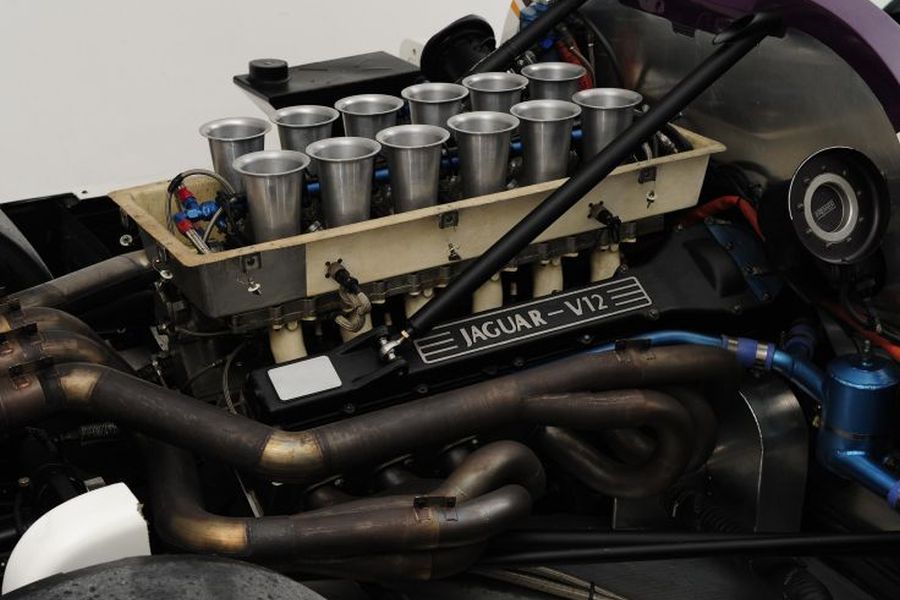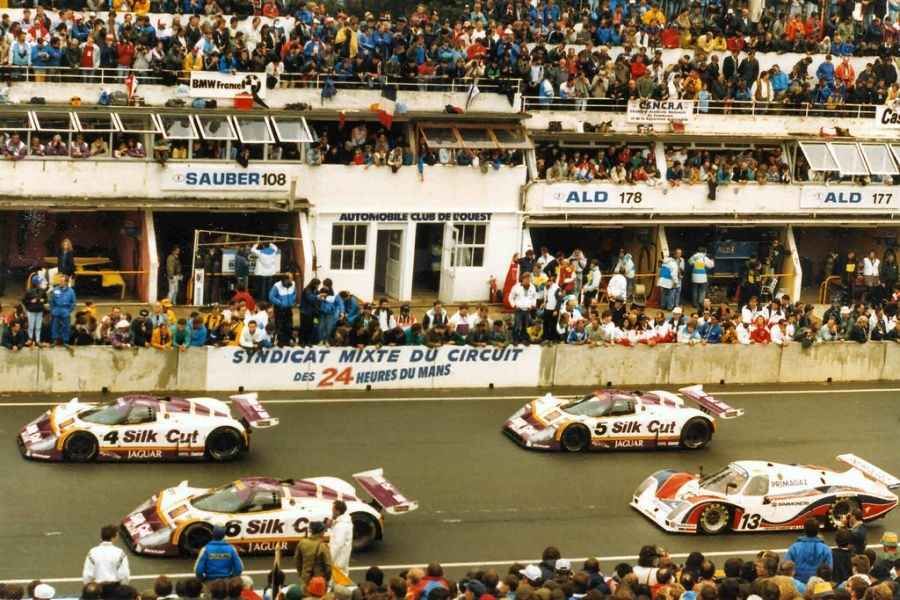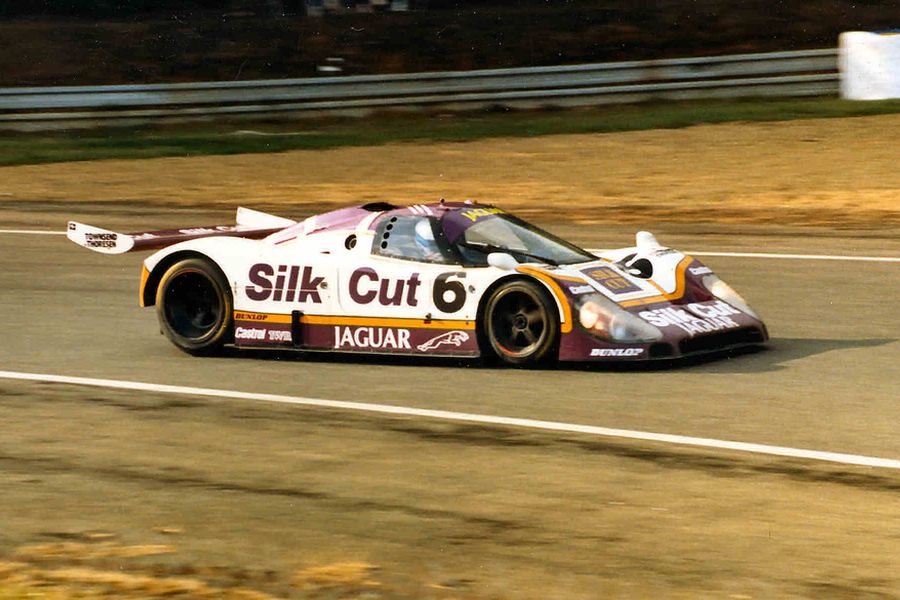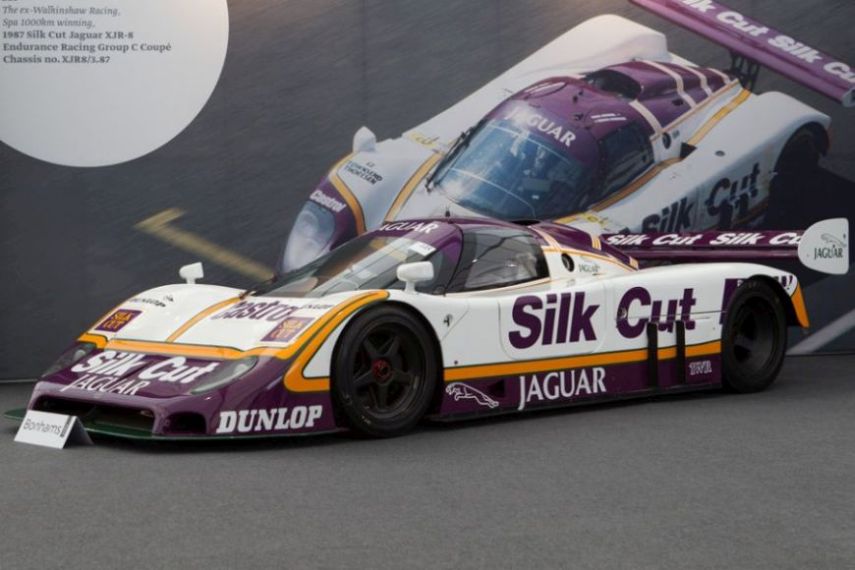How Powerful it Felt to Drive a Jaguar XJR-8 Back in 1987?
Jaguar XJR-8 is one of the most successful race cars in Jaguar’s motorsport history. It was in use for just one victorious season – 1987 – but what a season it was! With eight wins in ten rounds of the 1987 World Sportscar Championship, we can confidently say that this fabulous machine was a dominating force at the time. And although it provided both the driver and team titles for its owners, one major victory was missing – 24 hours of Le Mans. Its successor, the beastly Jaguar XJR-9 did succeed in winning the Le Mans race next year already, and it did so after 30 long years of waiting.

1987 Jaguar XJR-8
The XJR-8 came with bigger and more powerful engine
The first prototype in Jaguar’s XJR Series was produced in 1983. It was the XJR-5, prepared for the IMSA Camel GTP Championship. Its younger brother, the Jaguar XJR-6, debuted in the 1985 World Sportscar Championship.
The XJR-8 was the successor of the XJR-6. Designed by Tony Southgate, the XJR-8 was similar to its predecessor although it had more than 40 changes compared to the XJR-6. The major change was the bigger and more powerful engine. The naturally aspirated 6.2-litre V12 with 660 hp became the 7.0-litre V12 with about 720 hp.

Jaguar’s V12 engine for XJR-8
Six XJR-8s were produced
The 4800-mm long car featured carbon composite body on the carbon fiber and kevlar monocoque chassis. The engine was in the middle, coupled with March/TWR 5-speed manual gearbox. The rear-while-drive car weighed 900 kilograms, so the power to weight ratio was 0.8 hp/kg.
The maximum speed of such a car was over 220 mph (355 kph) on the long straight at Circuit de la Sarthe. Unlike its main German rival Porsche 962C with a lion-type roar, Jaguar had higher-pitched exhaust sound.
Jaguar and Tom Walkinshaw Racing produced six cars in total, converting three XJR-6 chassis and producing three all-new XJR-8 chassis (J12-C-187, J12-C-287, J12-C-387). At the end of the 1987 WSC season, the only one chassis was not converted into the XJR-9 specification.

XJR-8 featured mid-mounted V12 engine
Four consecutive wins at the start of 1987 WSC season
After scoring only one victory with XJR-6 in the 1986 WSC season, Jaguar had high hopes for the 1987 season. The opening round at Jarama Circuit in March was victorious, with #5 Silk Cut Jaguar winning the race ahead of #17 Porsche and #4 Jaguar. The winning drivers were Jan Lammers and John Watson.
A week later, at Jerez, one more victory followed, with Eddie Cheever and Raul Boesel winning the race with #4 car. Silk Cut Jaguars were victorious in two more races, in April at Monza and in may at Silverstone, with #5 and #4 sharing the triumphs.

Three Jaguar XJR-8s at 1987 Le Mans race
Disappointing result at 1987 24 hours of Le Mans
After four consecutive wins, the team came to the Circuit de la Sarthe with three cars were prepared for the world’s greatest endurance race, each with a low-drag configuration. Eddie Cheever, Raul Boesel and Jan Lammers were sharing the #4 car. John Watson, Win Percy and Jan Lammers were the trio in the #5 car. Martin Brundle and John Nielsen were the drivers of the #6 Jaguar XJR-8.
Unfortunately for the British team, two out of the three cars failed to finish. The #5 car stopped after 158 laps because of an accident. The #6 car lasted for 231 laps, but broken head gasket forced a retirement. The surviving car, which was in the second place after 18 hours of racing, limped to finish after a gearbox problem and finished fifth, thirty laps behind the winning crew in the #17 Porsche 962C.

The #6 Jaguar XJR-8 at 1987 Le Mans 24h
Four more wins and two world’s titles for Jaguar
After a disappointing result at Le Mans, the Silk Cut Jaguar team scored four more WSC victories in the second part of the season. The most successful driver was Raul Boesel, who was the winner at Brands Hatch, Nurburgring and Spa-Francorchamps, taking the drivers’ championship title with five wins in ten races.
Jan Lammers and John Watson were the vice-champions, Eddie Cheever finished third in the points. The team also captured the world’s title, ahead of Brun Motorsport and Porsche’s factory team.

World champion Raul Boesel was mostly driving the #4 XJR-8
History in the move – some XJR race cars are still running
For the 1988 WSC season, the chassis J12-C-187 and J12-C-287 were upgraded to XJR-9 specifications. Today, the J12-C-187 is owned by a Swedish historic racer and it appears selected historic events. The J12-C-287 raced for two more seasons and then it was retired to the TWR Museum.
After the bankruptcy of TWR, the car passed into private hands. The chassis J12-C-387 was the only one not updated to XJR-9 specification and following a restoration it was sold to a collector in 1989.

Jaguar XJR-8 technical specifications
Length: 4800 mm
Width: 2000 mm
Height: 1100 mm
Wheelbase: 2780 mm
Track (front and rear): 1500 mm
Weight: 900 kg
Chassis/body: Carbon fibre and kevlar monocoquecarbon composite panels
Engine: 6995cc, V12 naturally aspirated
Power/torque: 720 hp/820 Nm
Transmission: rear wheel driveMarch/TWR 5 speed manual gearbox
Front suspension: double wishbones, push-rod and rocker activated coil springs over dampers, anti-roll bar
Rear suspension: rocker operated double coil springs over dampers
Braking: ventilated discs, all-round
Video : A magical sound of Jaguar’s V12 engine
Photos: ultimatecarpage.com, wallpaperup.com, motorsportm8.com,






